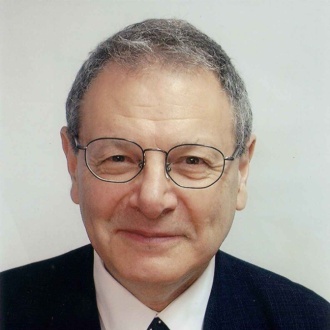Chanukah: The Dreidel
The dreidel for Chanukah and the gragger (Ra’ashan) for Purim have the exact same structure, have you ever noticed? Both have a round bulb from which a stem protrudes. The difference is that the dreidel’s stem protrudes from the top of the dreidel and points upward, the gragger’s stem protrudes from the bottom of the gragger and points downward.
The dreidel is a spinning top that you spin by twirling the stem at the top. The gragger is a noisemaker that is rotated by swinging the stem at the bottom. What does this represent?
First a word about these two toys. Tradition holds that Jewish children would hide in the Judean hills to study Torah. When Greek soldiers would venture into the area, they would hide the scrolls that they were studying and play dreidel. We commemorate this by playing dreidel on Chanukah.
The gragger is a noisemaker that we use to celebrate the downfall of Haman. When the story of Purim is chanted on Purim, we swing the graggers to make a racket when Haman’s name is recited. It indicates our jubilance over our victory and Haman’s downfall.
Now that we know their uses and backgrounds, we know that there is scant connection between the two. If so, why is their construction so similar and yet, in one detail, so different?
Purim and Chanukah
The truth is that Purim and Chanukah share a special kinship. Of all the holidays in the year, these are the only two that were established by the sages and are not mentioned in the Torah.[1]
There is some symmetry between the stories of Purim and Chanukah. In both cases, the miracles were jump-started by human initiative. The Exodus from Egypt was G-d’s doing through and through. Our ancestors were mere bystanders and beneficiaries of the miracle. They did not invest any effort. Similarly, at Sinai, it was G-d Who gave the Torah. Our ancestors merely stood by and received it. They did not take an active part.
Not so with Chanukah and Purim. The miracles of Chanukah were awesome. A small band of Maccabee fighters defeated a powerful Greek army, but the miracle didn’t occur until the Jews risked their lives and pressed the attack. A small cruise of oil that was meant to last for one night, lasted for eight full days and nights. But the miracle didn’t occur until after the Jews lit the candles that first night. They took the first step. G-d didn’t make the lights appear miraculously.
The same is true of Purim, but even more so. The miracles in the story of Purim were rather concealed. On the surface it was all Mordechai’s and Esther’s doing. Ester married the king. Mordechai urged her to intervene with the king on behalf of the Jews. Esther risked her life to do so, and the king proved amenable to her request. Each segment of the story is perfectly natural and normal. It is only when we put all the pieces together that we see incredible symmetry. We recognize G-d’s hand in retrospect.
It is, therefore, fitting that the two miracles instigated by human effort are celebrated by festivals established by humans. By contrast, the miracles of Passover and Shavuot were initiated by G-d, and are, therefore, celebrated by festivals ordained by G-d.
The Dreidel and Gragger
We now understand why the construction of the dreidel and the gragger are so similar. Though the two festivals celebrate different stories, they share a common thread—the bulk of the effort was made by humans. Accordingly, the toys associated with these festivals are similar in construct.
But despite their similarity in construction, they are completely different in orientation. The dreidel faces up and the gragger faces down. You hold the dreidel from the stem at the top and you spin it. You hold the gragger up by the stem at the bottom and you swing it.
Upon closer reflection, however, it emerges that these differences are precisely aligned with their respective stories.
In the Chanukah story the Jews jump-started the miracle but once they got it going, G-d took over and performed unbelievable miracles. It was clearly a supernal miraculous event. Therefore, the stick that holds the dreidel points upward toward G-d.
In the Purim story, G-d’s hand remained concealed. There were no incredible miracles. There were only incredible acts of heroism on the part of Mordechai and Esther. On the surface, the people seemed to be the true heroes of this story. Of course, we know that G-d was working His miracles behind the scenes. But since this was not visible at the time and was unknown to the people in advance, it required heroism and self sacrifice on their part. Accordingly, the gragger is held and supported by a stem that points downwards—to earth, to the people.
Repentance
There is one more difference between Chanukah and Purim that accounts for the difference in orientation between the dreidel and the gragger.
On Purim, the entire nation was inspired to holiness. They fasted for three days and three nights, they prayed and repented. For an entire year, not a single Jew considered even for a moment to bow to Haman. It was an incredible feat of national repentance. The Jews deserved to be saved.
On Chanukah, a small band of several thousand fighters fought the Greeks and risked their lives for Judaism. Sadly, most Jews were either too content with Hellenism or too afraid to fight. These Jews did little to deserve salvation. They were saved only out of G-d’s love and benevolence.
Accordingly, the dreidel’s and the gragger’s stems each point in the correct direction. The gragger’s stem faces downwards toward the people who deserved to be saved. The dreidel’s stem faces upward toward G-d who intervened and saved us despite our lack of national initiative.
It also explains why Chanukah is celebrated with oil and light whereas Purim is celebrated with merrymaking and feasts.[2] Purim was earned by human effort; it is therefore celebrated with celebrations enjoyed by the physical body. Chanukah was an unearned miracle from above; it is therefore celebrated by adding light and kindling flames that dance upward toward the Heavens.[3]
The moral is this: When we run into trouble, we are required to do all that we can, and then a little, to help ourselves. When we do all that we can, G-d steps in and does the rest. But G-d loves even if we don’t do much to help ourselves. In the end, G-d always has and always will ensure the survival of our people.
[1] Both miracles occurred after the Torah was given.
[2] Another explanation is that Haman threatened the Jewish body whereas the Greeks threatened the Jewish soul. Thus, Purim is celebrated with bodily festivities and Chanukah is celebrated with light.
[3] This essay is based on commentary by Peri Tzadik and by Korban He’ani on Chanukah.
Tags: dreidel





















